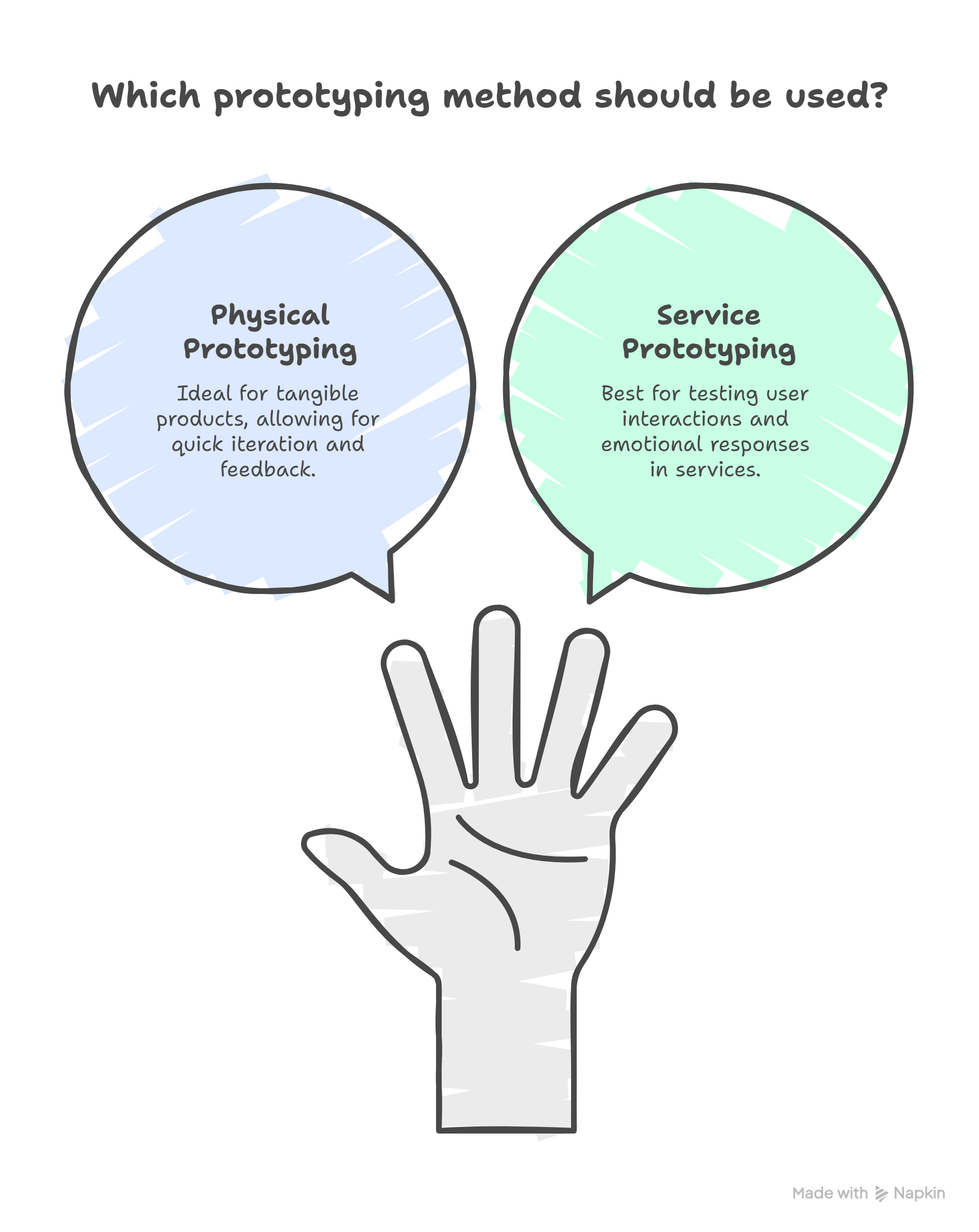Methods in Prototyping
Prototyping Methods
Prototyping is not just for physical products; it's a powerful tool for testing ideas related to services and human emotions as well. The goal is to create a low-fidelity model using readily available materials to quickly gain clarity, gather feedback, and validate ideas without a huge investment.
1. Prototyping Physical Products
Physical prototypes should be low-fidelity and made with common materials, allowing them to be easily discarded and iterated upon.
- Paper Prototyping: This method is ideal for developing user interfaces, such as a taxi booking app. You can draw each screen on a separate Post-it note and move them around to simulate the user flow. This helps to quickly get a sense of how the product will function and allows for easy changes based on early feedback.
- Lego and Clay Prototyping: Using materials like Lego blocks and synthetic clay can make people more playful and imaginative with their ideas. They allow for the creation of three-dimensional models of complex structures, which provides clarity on how the idea will be manifested in reality.
- "Quick and Dirty" Prototyping: This involves using any available materials, such as wood or thermocol, to create a basic model. The focus is on functionality and learning, not on aesthetic perfection.
2. Prototyping Services and Experiences
Prototyping services can be more abstract but are equally important for testing user interactions and emotional responses.
- Storyboarding and Skits: Borrowed from the advertising world, storyboards and skits are a powerful way to visually and dramatically demonstrate how a service will unfold. For example, a bank can use a skit to simulate an elderly person's experience of opening a new account to identify pain points and improve the service.
-
Storytelling (SCQA): The SCQA technique (Situation, Complication, Question, Answer) is a structured way to prototype a service by narrating the idea to a customer. It helps to validate if the idea resonates with the customer and addresses a real need in a compelling way.
- Situation: Describe the current context (e.g., 300-350 people dining at the staff canteen during lunch hours).
- Complication: Highlight the key problem (e.g., long queues at both the billing and food counters).
- Question: Pose the central challenge (e.g., "how can we come up with a solution to reduce the queue length?").
- Answer: Present the proposed solutions as a coherent story to gauge the customer's reaction.
-
Scenario Planning: This method involves testing an idea against multiple hypothetical situations to see if it holds up under different conditions.
- Best-Case Scenario: What would the ideal outcome be? (e.g., no food waste, tasty food, and minimum wastage in the canteen).
- Worst-Case Scenario: What's the worst that could happen? (e.g., twice the usual amount of food is wasted).
- Usual-Case Scenario: What is the most likely outcome? (e.g., the average amount of food waste). By analyzing an idea across these three scenarios, you can determine which solutions are most robust and where they would be most effective.
These prototyping methods, whether for products or services, are a fundamental part of the design thinking process, ensuring that ideas are validated and refined before they are fully developed.


No Comments